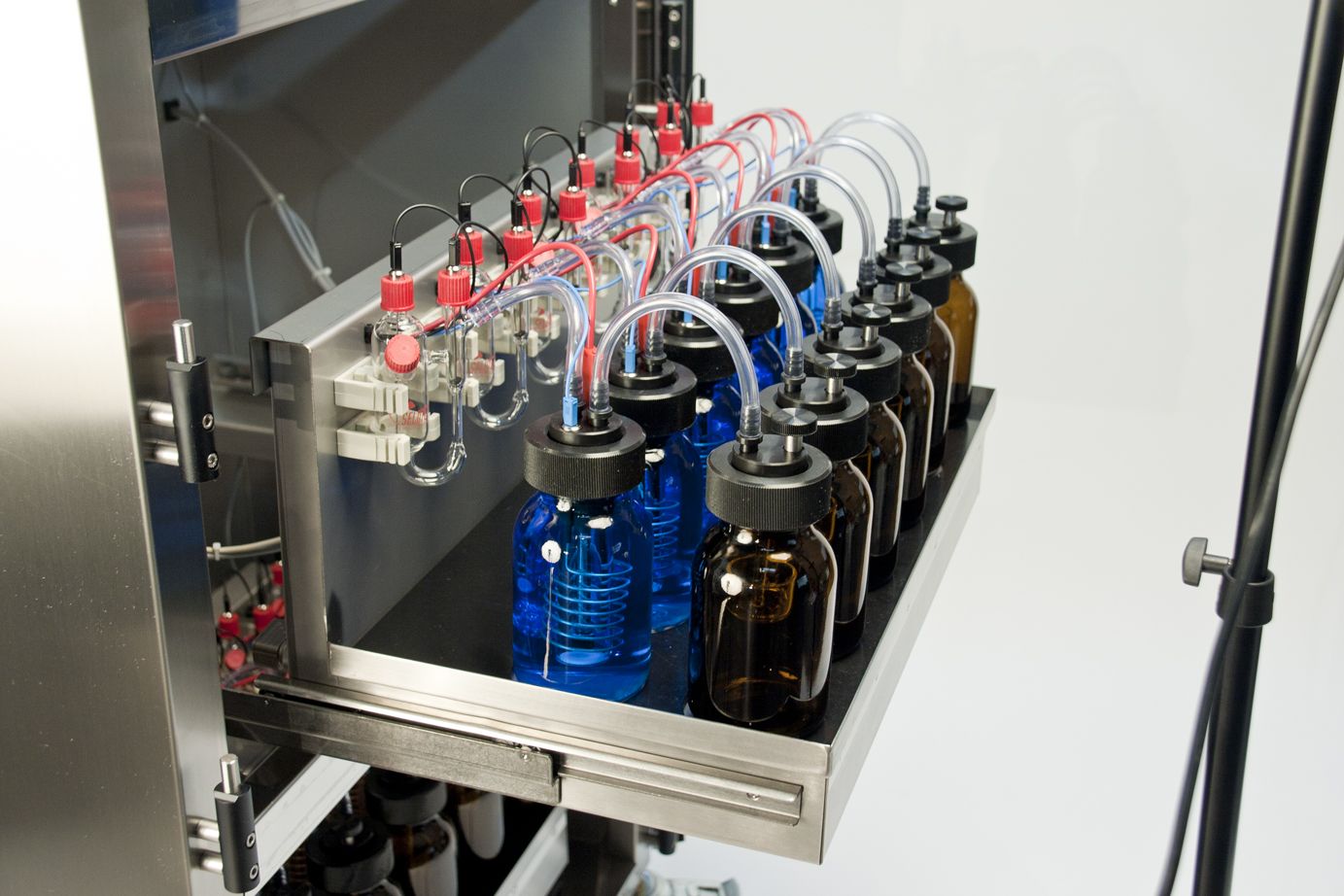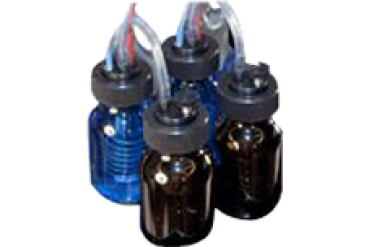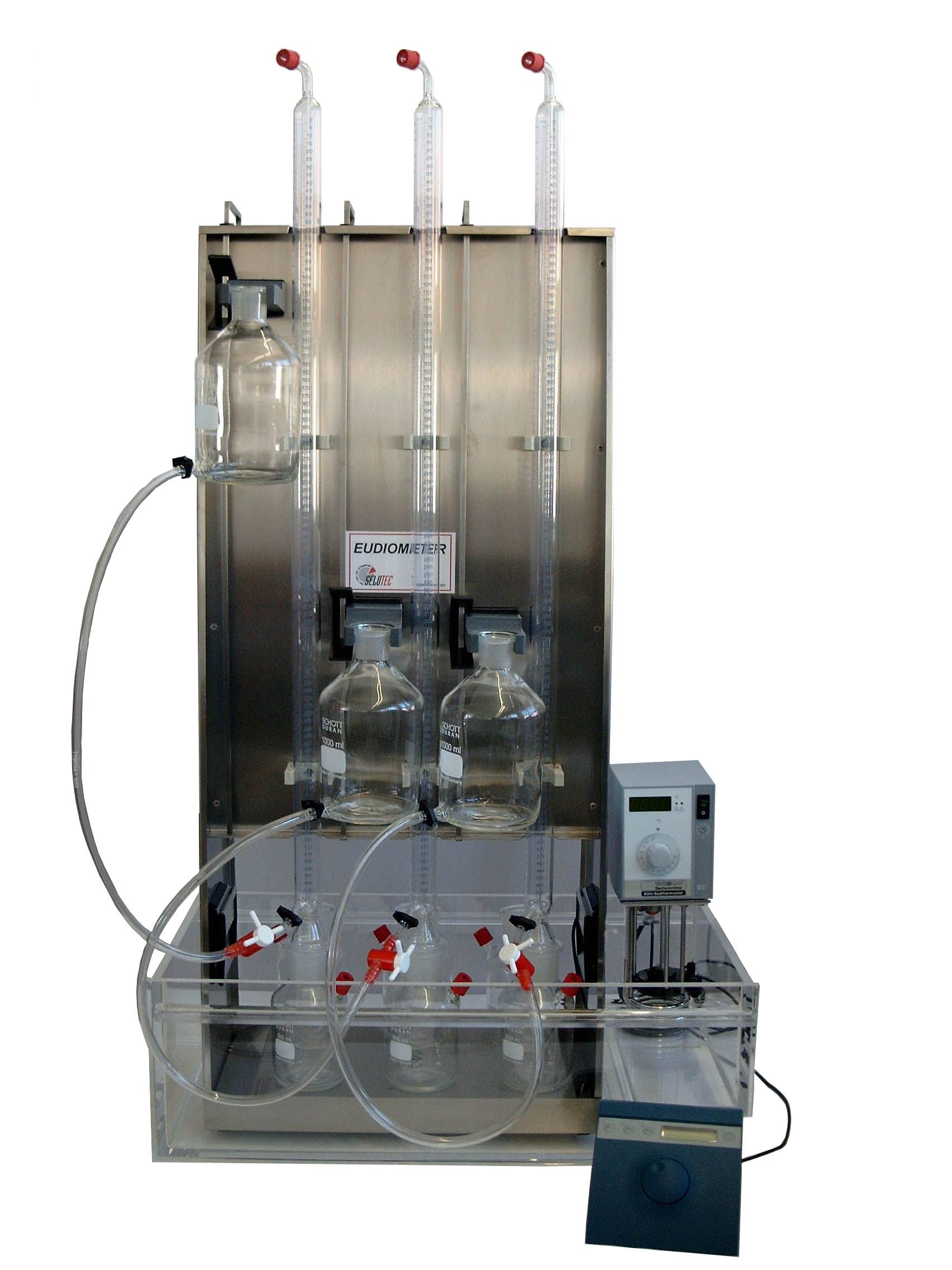Respirometer of SELUTEC GmbH
Environmental technology - Respirometer
The biochemical oxygen demand (BOD) is one of the important parameters for classifying the pollution level of waste waters because it corresponds largely to the biochemical oxidation of organic substances in sewage purification plants.
In waters and water treatment facilities, organic substances are reduced by oxidation by means of the metabolism of bacteria. The amount of oxygen which is necessary for this biochemical oxidation of organic substances is defined as "BOD". As the solubility of oxygen in water is relatively small, the same amount of oxygen must be added to the water for biochemical oxidation as the amount which is consumed by the micro-organisms.
If this were not the case, the oxygen content of the water would rapidly be reduced to zero, the organic matter would be decomposed by anaerobic micro-organisms in a process of putrefaction, and the whole process would be considerably slower.
Respirometer
Respirometer BSBdigi O2 / BSBdigi CO2
Specialties of the system:
Standard - stirrer system with 6 measuring places
Thank to its modular design, the BSB digi system can be extended to up to more than 100 measuring points. This allows individual adaption of the system to the requirements of the use.
Advantages:
- The compact construction requires little surface space
- By a continuous balance of consumed oxygen, a very high oxygen depletion can be detected without sample dilution
- Tempering is carried out in air, thus no corrosion and no creeping current
- The oxygen consumption can be registered for any random time intervals, thus an affirmative consumption curve is always possible thank to its modular design, the BSBdigi system can be extended to up to more than 100 measuring points. This allows individual adaption of the system to the requirements of the user
- high pressure constancy
- no stress for bio-organism


BSBdigi CO2:
The amount of CO2 microbially generated is estimated via its absorption in a KOH solution with measuring the change in conductivity. Determining O2-consumption in connection with CO2-production during the biological degradation process allows a secure and unambiguous judgment of biodegradation.
Thus an evaluation of the extent of ultimate aerobic biodegradation, defined as the break-down of an organic chemical compound by microorganisms in the presence of oxygen into carbon dioxide, water, mineral salts (mineralization) and new biomass can be approached. In addition it improves the possibilities of a desirable C-balancing.
| Testing directions | Test |
| ISO / DIS 14851 | Plastics - Evaluation of the ultimate aerobic biodegradability in an aqueous medium - Method by determining the oxygen demand in a closed respirometer |
| ISO / DIS 14852 | Plastics - Evaluation of the ultimate aerobic biodegradability in an aqueous medium - Method by analysis of released carbon dioxide |
| ISO-Proposal (1998) | Plastics - Determination of the ultimate aerobic biodegradability in soil by measuring the oxygen demand in a closed respirometer or the amount of carbon dioxide released |
| OECD 301 C | Modified MITI test |
| OECD 301 F | Unterscheidet sich von 301 C im Einsatz der Inokula |







